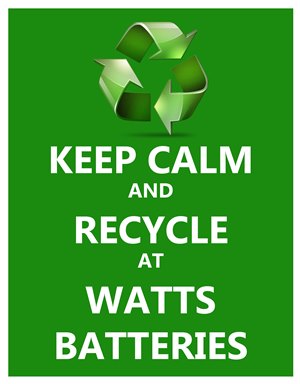
Environmental Sustainability is Everybody’s Responsibility
Over 8,000 tonnes of batteries go into landfill each year. Batteries are one of the most dangerous common waste discarded by Australian households. Many are made from heavy metals and harmful elements such as nickel, cadmium, lead and mercury, which can pollute soil and water and harm wildlife and humans. Mobile phones are replaced on average every two years creating a large surplus of unwanted items.
Over 90% of the materials in mobile phones, batteries and chargers can be recycled. However if not handled well at the end of their life, they can be a threat to the environment.
Recycling your old batteries is an important aspect of reducing the heavy metals and acids that enter our landfills. These metals, which can include Mercury, eventually enter the ecosystem through the ground water tables. Once these elements have leached into the environment, they can enter the food stream either through crops, or fish.
By recycling, valuable minerals can be recovered that could otherwise end up in landfill and act as pollutants.
These include mercury (from button cell batteries), zinc, manganese dioxide and silver (from single-use batteries), lead, sulphuric acid, & plastic (from car batteries), and nickel-cadmium, cadmium, nickel-metal hydride and lithium-ion (from rechargeable batteries).
COMPONENTS OF A LEAD ACID BATTERY
The main components of the battery are lead (Pb) electrodes and lead dioxide (PbO2) electrodes immersed in a solution of water and sulphuric acid. These are generally contained in a plastic case made from polypropylene.
THE RECYCLING PROCESS
The lead, plastic and electrolyte (sulphuric acid) in used lead acid batteries (ULAB) is recycled. The most common processes are shown below. Around 98% of the material in each battery is recycled.
The recycling process generally involves the following steps:
- The used batteries are drained and broken apart in a hammer mill or another type of crushing machine.
- The pieces are processed through various tanks, where the different densities of the materials cause some to sink (lead) and some to float (rubber and plastics). From here the materials are separated and treated individually.
- The plastic from the cases is transported to a specialist plastic recycler. The recycler melts the plastic using an injection moulding process to produce plastic pellets. These are generally sold to a battery manufacturer to manufacture new battery cases.
- The plastic or fibreglass separators can be separated from the polypropylene cases and either recycled or used as a fuel supplement.
- The lead grids and lead oxide are either sold to a secondary lead smelter or processed on-site in a smelter to produce lead ingots. Some processes combine the waste lead streams, while others feed the paste to a smelter furnace to recover soft lead and feed the grids and terminals to a melting furnace to produce hard lead. The lead is either exported or sold locally to produce new batteries.
The sulphuric acid can be either:
- Neutralised on-site for safe disposal (not the preferred option)
- Reused on-site for other applications
- Treated to produce sodium sulphate, which is sold to laundry detergent manufacturers
- Treated to produce calcium sulphate (gypsum), which is sold to plasterboard and cement manufacturers.
The Benefits of Recycling Lead Acid Batteries
- Recycling minimises the potential for lead to disperse in the environment after use. Lead is a toxic heavy metal and poses a risk to the environment and human health if disposed of inappropriately or to landfill.
- Recycling helps to conserve non-renewable resources, particularly lead.
- Producing recycled lead from batteries requires 35-40% of the energy needed to produce new lead from ore.
CONTACT DETAILS
38 Woodfield Blvd
Caringbah NSW 2229
Phone: 02 9526 2752
MOBILE: 0416 262 752
TRADING HOURS
MONDAY - FRIDAY: 8:00AM - 4:00PM
ACN: 139903361
ABN: 88 139 903 361

